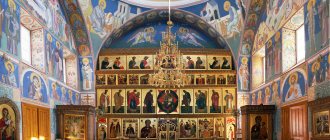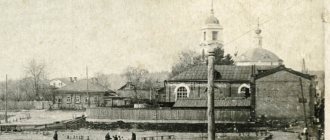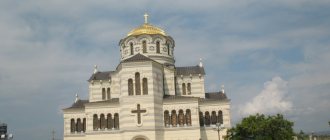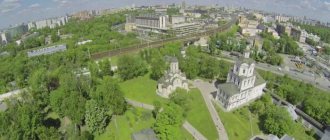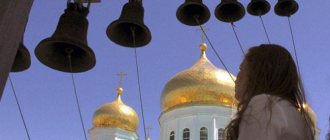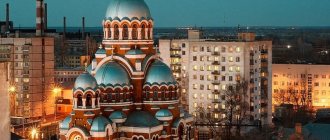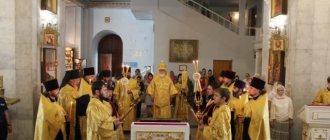Mir
Belarus Vitebsk region Polotsk St. Sophia Cathedral (Polotsk) Map is loading...
{"format":"leaflet","minzoom":false,"maxzoom":false,"limit":50,"offset":0,"link":"all","sort":[""], "order":[],"headers":"show","mainlabel":"","intro":"","outro":"","searchlabel":"\u2026 \u0441\u043b\u0435\ u0434\u0443\u044e\u0449\u0438\u0435 \u0440\u0435\u0437\u0443\u043b\u044c\u0442\u0430\u0442\u044b","default":"","import-annotation":false,"width ":"auto","height":"350px","centre":{"text":"","title":"""link":"""lat":55.48582999999999998408384271897375583648681640625,"lon": 28.7583300000000008367351256310939788818359375,"icon":""},"title":"","label":"","icon":"","lines":[],"polygons":[],"circles":[ ],"rectangles":[],"copycoords":false,"static":false,"zoom":8,"defzoom":14,"layers":["OpenStreetMap"],"image layers":[] ,"overlays":[],"resizable":false,"fullscreen":true,"scrollwheelzoom":true,"cluster":false,"clustermaxzoom":9,"clusterzoomonclick":true,"clustermaxradius":80, "clusterspiderfy":true,"geojson":"","clicktarget":"","showtitle":true,"hidenamespace":false,"template":"","userparam":"","activeicon": "","pagelabel":false,"ajaxcoordproperty":"","ajaxquery":"","locations":[{"text":"\u003Cb\u003E\u003Ca href=\"/palomnik/%D0% A1%D0%BE%D1%84%D0%B8%D0%B9%D1%81%D0%BA%D0%B8%D0%B9_%D1%81%D0%BE%D0%B1%D0%BE% D1%80_(%D0%9F%D0%BE%D0%BB%D0%BE%D1%86%D0%BA)\» title=\»\u0421\u043e\u0444\u0438\u0439\u0441\u043a\ u0438\u0439 \u0441\u043e\u0431\u043e\u0440 (\u041f\u043e\u043b\u043e\u0446\u043a)\»\u003E\u0421\u043e\u0444\u0438\u0439\u0441 \u043a\u0438\u0439 \ u0441\u043e\u0431\u043e\u0440 (\u041f\u043e\u043b\u043e\u0446\u043a)\u003C/a\u003E\u003C/b\u003E\u003Chr /\u003E\u003Ca href=\"/palomnik /% D0%A1%D0%B2%D0%BE%D0%B9%D1%81%D1%82%D0%B2%D0%BE:%D0%90%D0%BD%D0%BD%D0%BE%D1 %82%D0%B0%D1%86%D0%B8%D1%8F\" title=\"\u0421\u0432\u043e\u0439\u0441\u0442\u0432\u043e:\u0410\u043d\u043d\u043e\ u0442\u0430\u0446\u0438\u044f\»\u003E\u0410\u043d\u043d\u043e\u0442\u0430\u0446\u0438\u044f\u003C/a\u003E: »'\u0421\u043e\u0 444\u0438\u0301 \u0439\u0441\u043a\u0438\u0439 \u0441\u043e\u0431\u043e\u0440"' (\u0431\u0435\u043b\u043e\u0440. \u0421\u0430\u0444\u0456\u0439\u0441\u043a\u0456 \u0441\u0430\u0431\u043e\u0440) \u2014 \u043f\u0430\u043c\u044f\u0442\u043 d\u0438\u043a\u0430\u0440\ u0445\u0438\u0442\u0435\u043a\u0442\u0443\u0440\u044b XI\u2014XVIII \u0432\u0435\u043a\u043e\u0432, \u0441\u0430\u043c\u0430\u0 44f\u043f\u0435\u0440\u0432\ u0430\u044f \u043a\u0430\u043c\u0435\u043d\u043d\u0430\u044f \u043f\u043e\u0441\u0442\u0440\u043e\u0439\u043a\u0430 \u043d\u 0430\u0442\u0435\u0440\u0440\ u0438\u0442\u043e\u0440\u0438\u0438 \u0411\u0435\u043b\u043e\u0440\u0443\u0441\u0441\u0438\u0438. \u0421\u043e\u0431\u043e\u0440 \u0432\u0445\u043e\u0434\u0438\u0442 \u0432 \u0441\u043e\u0441\u0442\u0430\u0432 \u041f\u043 e\u043b\u043e\u0446\u043a\u043e > u043e\u043c\u0443\u0437\ u0435\u044f-\u0437\u0430\u043f\u043e\u0432\u0435\u0434\u043d\u0438\u043a\u0430.","title":"\u0421\u043e\u0444\u0438\u0439\u0441\u0 43a\u0438 \u0439 \u0441\u043e\u0431\u043e\u0440 (\u041f\u043e\u043b\u043e\u0446\u043a)”,”link”:””,”lat”:55.4858299999999999840838427189737558 3648681640625,"lon":28.7583300000000008367351256310939788818359375,"icon" :""}],"imageLayers":[]}
55.48681; 28.780333
Belarus, Vitebsk region, Polotsk, Center microdistrict
Polotsk, Vitebsk region
Belarus
Telephone:
+375 214 42-53-40
Saint Sophia Cathedral
(Belarusian Safiyski Sabor) is an architectural monument of the 11th-18th centuries, the very first stone building on the territory of Belarus. The cathedral is part of the Polotsk Historical and Cultural Museum-Reserve.
History[edit]
Built in the mid-11th century in the Byzantine style, the temple was consecrated in the name of Hagia Sophia. To this day, St. Sophia Cathedral has been preserved in a significantly changed form; it was finally rebuilt in the 18th century in the Vilna Baroque style. It has been preserved in this form to this day.
After numerous destructions and reconstructions from the ancient cathedral of the 11th century. the foundation, the lower parts of the walls and supporting pillars remained, and only the eastern apse rises to a height of about 12 m. During the construction of the cathedral in the 11th century. plinth was used as a building material - a flat brick, the recipe for which, as well as the masonry technology, was brought here by Byzantine craftsmen. The masonry of the cathedral was carried out in the classic technique for Byzantine architecture with a “recessed row”, when every second row of plinth was hidden, recessed deep into the wall and rubbed over with cement on top. And the temple looked so striped, unplastered from the outside in the 11th century, but inside the walls were plastered and painted with frescoes.
After the return of Polotsk to the jurisdiction of the Grand Duchy of Lithuania in 1579 by the troops of King Stefan Batory, St. Sophia Cathedral became the only temple in the city that belonged to the Orthodox. After the signing of the Union of Brest in 1596, the cathedral passed to the Uniates. After the fire and partial destruction in 1607, the cathedral was in disrepair; in 1618, Uniate Archbishop Josaphat Kuntsevich restored and significantly rebuilt the cathedral.
In 1642, the cathedral was again damaged by fire, but was soon restored. During the Russian-Polish War, Polotsk was taken by the Russian troops of Tsar Alexei Mikhailovich, who visited the cathedral in 1654. Until 1667, St. Sophia Cathedral was Orthodox, and then again passed to the Uniates.
In 1705, during the Northern War of 1700-1721, Tsar Peter I visited the cathedral.
Model of the original appearance of St. Sophia Cathedral
According to the 19th-century Polish historian Franciszek Duchinski, Peter invaded the Uniate cathedral, where the relics of Josaphat Kuntsevich were kept, drunk and with soldiers. The king demanded the keys to the royal gates, and when the Basilians refused to give them, he personally killed the abbot and four Basilian monks, and ordered the bodies to be drowned in the Dvina. This event is briefly reported in the Vitebsk Chronicle: Eodem anno [1705], mense Iulli 11 die in ecclesia S. Sofiae ipse occidit 4 basilianos in Polocia (“In the same [1705] year of July, on the 11th day in the Church of St. Sophia [the king himself Peter I] killed 4 Basilians in Polotsk").
According to another version, the conflict occurred after the monks answered the king’s question about the image on the icon that it was Saint Jehoshaphat, killed by heretics. The king ordered the arrest of the monks, but they resisted, resulting in a clash in which they were killed. Documents from the Cabinet of Peter I, stored in the RGADA, report that “the incident in Polotsk was a spontaneous manifestation of the tsar’s anger, provoked by the impudent behavior of the Uniate monks.”
On July 11, 1705, after the incident, the cathedral was closed by the Russian army. Initially, Peter I intended to transfer the cathedral to the Orthodox community, but they refused to accept it, fearing that after the departure of the Russian troops, repression would begin against them[4].
A gunpowder warehouse was located in the vestibule of the temple, which exploded on May 1, 1710, after which the St. Sophia Cathedral was completely destroyed and lay in ruins until 1738.
The restoration of the cathedral was carried out by Uniate Archbishop Florian Grebnitsky. By 1750, a two-tower basilica in the Vilna Baroque style was erected on the surviving foundations of the walls, which was consecrated in honor of the Descent of the Holy Spirit. During the Patriotic War of 1812, the temple was used by French troops as a stable.
After the church council of 1839, which opened within the walls of the temple, the cathedral became Orthodox.
In 1911-1914, a major renovation of the cathedral was carried out. In 1924, as part of the Soviet atheist policy, the church was closed and a local history museum was placed in it. During the period of German occupation from 1942 to July 1944, St. Sophia Cathedral was active, and then was closed again.
In 1985, an organ was built in the cathedral of the Czechoslovak organ building. The first concert was given on May 2, 1985 by organist Oleg Yanchenko.
How to get to the cathedral on your own:
From Vitebsk, which is now the regional center, you can get to Polotsk by train in about two hours. But the train takes eight hours from Minsk, so it’s better to use the bus - the travel time will be halved.
Moscow is connected to Polotsk, which departs at about nine in the evening Moscow time from the Belorussky railway station, and arrives in Polotsk at the beginning of eight in the morning the next day.
It is also quite possible to get from Moscow to Polotsk by car - to Smolensk along M-1, then along A-141, and after Vitebsk - along A-215.
Current state[edit]
Interior
The cathedral is part of the Polotsk Historical and Cultural Museum-Reserve. One of Boris's stones is installed next to the cathedral.
In the concert hall of the St. Sophia Cathedral, festivals of ancient and modern chamber and organ music are held annually in April and November, the most famous of them is the “Zvany Safiya” festival, every Sunday there are concerts of organ music performed by the soloist of the concert hall.
Such virtuoso organists as Johann Trummer (Austria), Pierre Givo (France), Veronica Weber-Gerken (Germany) have already had the honor of performing at the St. Sophia Cathedral in Polotsk.
Once a year, on June 5, on the day of remembrance of St. Euphrosyne of Polotsk, an Orthodox service is taking place. Then a procession of the cross takes place from the St. Sophia Cathedral to the Spaso-Euphrosyne Monastery.
Description[edit]
After restoration in 1750, the cathedral became a three-nave, single-apse basilica, oriented to the north. On the south side, two symmetrical towers rose to a height of 50 m. Rebuilt in the late Belarusian or Vilna Baroque style, the cathedral also received a new interior design. In addition to Baroque columns, many stucco decorations, figured cornices and a somewhat unusual color scheme appeared. The altar part of the temple was separated from the central nave by a high three-tier barrier, adjacent to which on the vault was a bas-relief image of the New Testament Trinity. The second and first tiers were painted and decorated with wooden sculptures. From the paintings on the altar barrier, the following have been preserved: a copy of the famous fresco by Leonardo da Vinci “The Last Supper” and the Savior Not Made by Hands.
St. Sophia Cathedral today
In today's view, St. Sophia Cathedral is one of the most significant cultural treasures of the country. In addition to divine services, concerts, mass cultural events are held within its walls, and excursions come from different parts of Belarus and the world.
In 1987, a museum of architectural history was opened on the territory of the cathedral. In it, visitors can see unique evidence of the rich history and architecture of the St. Sophia Cathedral in Polotsk and other unique exhibits. The masonry architecture that has come down to us from the 11th century, as well as magnificent frescoes and paintings, will be an excellent addition to the “historical journey” through the temple.
In 1985, Czech craftsmen built an organ that still plays in the church.
In the vicinity of St. Sophia Cathedral you can also see some attractions:
- Borisov stone of the 12th century. Located at the entrance to the temple, Borisov Stone is a boulder on which images of crosses and ancient writings were applied. In total, there are only 4 such religious boulder monuments on the territory of Belarus.
- Spaso-Efrosinievsky Monastery. The building was founded in 1125 by Euphrosyne of Polotsk, who also became its first abbess.
- Transfiguration Church. Built in the middle of the 12th century, the temple has been perfectly preserved to this day. The church is a historical and cultural value and is included in the UNESCO World Heritage List. The main property of the Spaso-Efrosyne Monastery is the famous gilded cross of Euphrosyne of Polotsk, made by the jeweler Lazar Bogsha, which is still kept here.
Interesting facts about St. Sophia Cathedral
- The temple was included in the UNESCO cultural heritage list.
- Very often people wonder how many St. Sophia Cathedrals exist in the world? So there are 12 of them. In addition to Polotsk, they are located in Istanbul, Kyiv, Veliky Novgorod, Tsarskoe Selo, Vologda, Tobolsk, Grodno, Laishevo, Alma-Ata and Thessaloniki.
- Every Sunday at 15:00, organ music concerts are held within the walls of the cathedral, which everyone can attend. Over the course of a year, the temple hosts about 300 such events.
- The cathedral is included in the Polotsk historical and cultural reserve.
- The construction of an exact copy of St. Sophia Cathedral is also planned in Vitebsk.
Where is the Belarusian St. Sophia Cathedral located?
The temple is located in Polotsk at the address: st. Zamkovaya, 1, in the Vitebsk region.
Polotsk St. Sophia Cathedral in Polotsk (photo)
St. Sophia Cathedral is a majestic monument of Christianity, which has almost completely preserved not only fragments of masonry, walls and architecture, but also spiritual wealth.
If you want to buy an apartment in Polotsk, contact our real estate portal! A large database of advertisements and a convenient search form for objects will help you choose the best option.
Original building[ | ]
Model of the original appearance of the St. Sophia Cathedral
After numerous destructions and reconstructions, the foundation, lower parts of the walls and supporting pillars remained from the ancient cathedral of the 11th century, and only the eastern apse rises to a height of about 12 meters. During the construction of the cathedral in the 11th century, plinth was used as a building material - a flat brick, the manufacturing recipe for which, as well as the masonry technology, was brought here by Byzantine craftsmen. The masonry of the cathedral was carried out in the classic technique for Byzantine architecture with a “recessed row”, when every second row of plinth was hidden, recessed deep into the wall and rubbed over with cement on top. And the temple looked so striped, unplastered from the outside in the 11th century, but inside the walls were plastered and painted with frescoes.
Why are cathedrals named after Hagia Sophia?
The Martyr Sophia is one of the most revered Christian saints. According to one version of her life, in the 2nd century. During the reign of the Roman Emperor Hadrian in Mediolan (modern Milan), the pious widow Sophia raised three daughters - Faith, Hope and Love - in reverence for the Christian faith. Because they openly professed the teachings of Christ, the Roman authorities, in front of their mother’s eyes, subjected them to torture and then painful execution. Sofia buried the bodies of her daughters and died on the third day.
The veneration of martyrs became widespread in the Christian Church. If the names of the daughters in Bulgarian and then Old Russian texts were translated into Slavic, then Sophia remained in the Greek version, although the spelling of her name is also known as Wisdom.
It is the Wisdom of God that the cult of St. is dedicated to. Sophia, which already in the 6th century was marked by the construction in her honor of a majestic cathedral in Constantinople. For ten centuries, until the construction of St. Peter's Church in Rome, it was the largest temple in the Christian world.
Burned and was reborn from the ruins
The three Sophias stood out sharply against the background of the architecture that surrounded them, causing contemporaries to gasp in amazement: Christian values entered the consciousness visually and visibly. Amazing temples were guided by the shining example from Constantinople, but each of the cathedrals turned out to be original and unique. And it’s not just about the domes, of which Sophia of Kyiv initially had thirteen, Polotsk – seven, and Novgorod – five. According to the authoritative conclusion of a specialist, “the Novgorod cathedral largely repeats the Kiev prototype. And yet it is a completely independent structure. The spirit of a young, healthy culture lives in it and hides the spirit of eternity, coming from the very depths of the Novgorod soil. The artistic persuasiveness of the monument lies in the combination of the eagerly perceived new and the timeless ancient experience.”1
St. Sophia Cathedral on the territory of the Novgorod Kremlin. Founded in 1045 by order of Prince Vladimir, son of Yaroslav the Wise. Photo: RIA Novosti
History of the foundation of the monastery
The Polotsk Cathedral was erected on the right bank of the Western Dvina in the city of Polotsk in the 11th century. In the mid-18th century, the church was restored according to the design of Jan Glaubitz in the Vilna Baroque style. Initially, the building was built based on monumental ancient Russian architecture with elements of the Romanesque style.
St. Sophia Cathedral in Polotsk, Belarus
The temple is located on the cardinal points. In the south there are towering pointed towers 50 meters high. They symbolize the unification of the Catholic and Orthodox churches. The thickness of the walls was 1.45 m. They were made of rubble stone, which alternated with brick using the striped masonry technique. A two-color scheme characteristic of the local art school was formed.
Shrines and patronal feasts
Saint Euphrosyne of Polotsk went to the Lord in 1173 in Jerusalem, when she made a pilgrimage there. Her relics were buried in the monastery of St. Theodosius at the church in the name of the Most Holy Theotokos. In 1187, the Egyptians invaded the country, and the incorruptible body of the righteous woman was transferred to Kyiv.
Interior of Polotsk St. Sophia Cathedral
For 732 years, the relics of Saint Euphrosyne rested in the cave of the Kiev Pechersk Lavra. During the reign of Nicholas the First, people began to ask for the saint to be transferred to Polotsk.
The patronal day falls on August 28 - the Dormition of the Blessed Virgin Mary.
Schedule of services
Divine services are not held in the cathedral itself, only on the day of memory of Euphrosyne. But there is a limit in the territory in which prayers are performed every day. The Orthodox Church is open every day. The limit schedule is as follows:
- from Monday to Friday, the doors of the temple are open from 06.30, when morning services are held, then at 05.45, from 16.30 Evening services, including midnight offices;
- on Saturday and Sunday the temple is open from 06.30 and 22.20;
- services are polyeleos, akathists to the Lord and the Most Holy Theotokos;
- Confession takes place before the Liturgy;
- every day statutory services and memorial services are held, the Undying Psalter is read;
- prayer services with akathists next to the relics of the saint.
